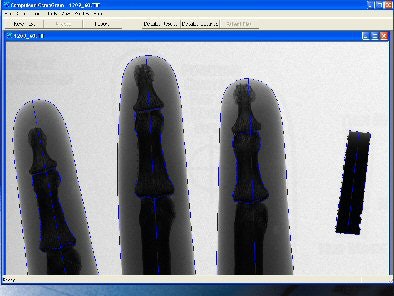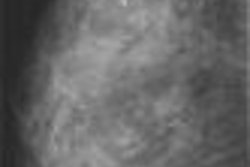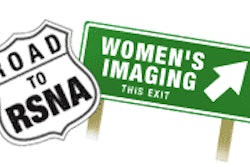
Every year osteoporosis affects more than 44 million Americans, mostly women, and costs the nation's healthcare system more than $18 billion to treat. Hip fractures caused by osteoporosis account for 300,000 hospitalizations in the U.S. per year, resulting in more deaths than breast cancer. But postmenopausal women, who are most at risk, are often inconsistently tested for the disease.
Bone densitometry and medical informatics firm CompuMed of Los Angeles is working to address this issue by linking its OsteoGram osteoporosis detection software system to digital mammography equipment. The system can be used as an accessory tool, or integrated into a digital workstation, allowing women to be tested for osteoporosis at the same time as their digital CR or DR exam, or annual mammogram. A standalone, software-based medical image processing system, OsteoGram allows healthcare providers to screen, diagnose, and monitor osteoporosis using images from analog or digital x-ray equipment.
Founded more than 30 years ago, CompuMed has more recently been focused on the development of technology to enable remote interpretation of ECGs. In 1993 the company acquired the OsteoGram technology from private research firm Skeletal Assessment Services, and launched its first-generation product. In 1995 pharmaceutical firm Merck of Whitehouse Station, NJ, licensed the technology for use in clinical trials for its osteoporosis drug Fosamax, and established an OsteoGram center in Los Angeles.
When Merck discontinued its use of OsteoGram three years later, CompuMed regained its distribution rights and developed a second-generation system that it began to market to primary care doctors. Users scan a hand x-ray film in-office with a desktop scanner, then the image is analyzed by the OsteoGram automated software analysis program, which finally produces a bone mineral density (BMD) report comparable to tests performed on dedicated BMD equipment.
 |
| An OsteoGram hand image acquired by a digital mammography unit. The OsteoGram software identifies and outlines the reference wedge and the three middle phalanges for BMD analysis. |
Although still marketing the analog version of OsteoGram, CompuMed has shifted its focus to a new DICOM version of the technology that automatically performs the analysis on digital x-ray equipment or network servers.
In 2003 the company forged an alliance with Auburndale, MA-based Orex Computed Radiography USA, and this past year CompuMed continued to make industry alliances with partnerships with Analogic subsidiary Anexa of Peabody, MA; SourceOne Healthcare Technologies of Mentor, OH; and Swissray International of Elizabeth, NJ. SourceOne will offer DICOM OsteoGram to its clients as a standalone technology, while Swissray will incorporate OsteoGram into its direct digital radiography systems. Potential future partners include Fujifilm Medical Systems USA of Stamford, CT. All four companies highlighted products that included OsteoGram in their booths at the 2004 RNSA show in Chicago.
This year CompuMed plans to make progress in linking OsteoGram with digital mammography. The company has filed for a provisional U.S. patent for the integration and use of OsteoGram software on digital mammography equipment. With approximately 600 to 700 digital mammography units installed in the U.S., and about 500 to 600 sold each year, linking OsteoGram to digital mammo is effective, according to CEO Jerry McLaughlin.
"Why don't women get tested for osteoporosis? It's often inconvenient," he said. "They don't want to go to another lab, then wait for the results. OsteoGram will allow them to be tested at a convenient point of care."
Patients will benefit from getting tested for osteoporosis at the same time a digital x-ray is being taken to diagnose a bone fracture or to screen for breast cancer, and radiologists also stand to benefit from having DICOM OsteoGram incorporated into their workflow.
An OsteoGram exam has a CPT code, and reimbursement is about $40, McLaughlin said. Performing both exams at the same time will boost mammography revenues, more than enough to offset the monthly lease for the digital CR, DR, or mammography equipment, he said. Testing for osteoporosis at the same time as other radiology exams may also boost the use of dual-energy x-ray absorptiometry (DEXA) systems at imaging centers, as OsteoGram exams will generate more positive findings for DEXA follow-ups.
CompuMed has conducted an initial study on the use of OsteoGram with digital mammography at a California teaching hospital, according to McLaughlin, but the firm still needs to perform clinical trials for the application -- which it plans to do this spring at the same facility. Future uses for OsteoGram include helping doctors diagnose and track arthritis and scoliosis, as well as helping pharmaceutical companies evaluate the efficacy of new drugs in clinical trials.
"What upsets all of us (in healthcare) is that osteoporosis is a treatable disease," McLaughlin said. "But 95% of the women who show up in the hospital with a fracture aren't even tested. We'd like to change that."
By Kate Madden Yee
AuntMinnie.com contributing writer
February 18, 2005
Related Reading
CompuMed seeks patent protection, November 23, 2004
CompuMed, Swissray sign licensing deal, November 18, 2004
CompuMed, SourceOne ink contract, November 17, 2004
CompuMed nets New Mexico Corrections, September 14, 2004
CompuMed revenues edge up in Q3, August 16, 2004
Copyright © 2005 AuntMinnie.com




















